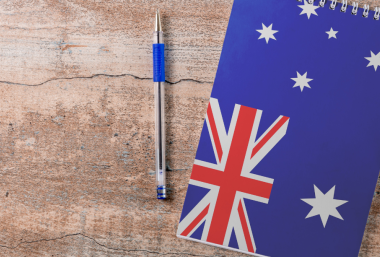In the dynamic world of design, where innovation knows no bounds, unintentional disclosure of a design can create huge challenges to securing protection - especially when setting sights on the Australian market. However, whether through an enthusiastic early reveal on social media or an unintended leak, these disclosures may not be fatal.
Similar to other jurisdictions, Australian design law has its own complexities and traps to watch out for.
If you’re reading this as a design attorney, when you learn about a design’s early disclosure, one of the first thoughts you’ll have is “Which jurisdictions provide a grace period?” As you know, design law internationally includes provisions such as the 12 month grace period intended to protect designers from disclosures that could otherwise cause serious issues. Australia is no exception, providing a 12 month grace period before the filing date of the application, or priority date.
However, Australian design law does have some differences that, though seemingly straightforward in text, pose real-world complexities that can perplex even the most astute minds - be they designers or the attorneys who advise them:
- The grace period does not apply to all types of disclosures. Specifically, publications made by the Registrar of Designs or equivalent overseas designs databases are not covered by the grace period. If you file in another jurisdiction that generally publishes quickly, such as Europe, before filing your application in Australia, it’s vital that you consider the timing of your application in Australia compared to the filing and publication dates of the European application. In other words, the grace period isn’t going to help you if the priority period has expired and the overseas design registration has published.
- IP Australia has a system for filing a declaration of grace period use. This declaration is a formal statement that disclosures falling within the grace period should not prejudice the novelty of the design application. However, unlike other jurisdictions such as Japan that require a declaration on filing, this is not necessary in Australia. Instead you can file a declaration during substantive examination of the design, in response to an examination report, or at any time leading up to the examination.
- Australia has relative novelty for designs. While this novelty requirement is evaluated on a global scale, not all disclosure is relevant. The relevant disclosure is anything that was publicly used in Australia, or a publication anywhere in the world. Accordingly, if the disclosure was public use of the design in the US, for example, but there was no publication of the design anywhere in the world, the design will still be novel in Australia regardless of whether the use was within the grace period.
Once you have a better understanding of grace periods and the novelty standard in Australia, you can rescue your clients from potentially sticky situations where a design is disclosed unintentionally. For example, one of your clients might be a designer who reveals a design at an international trade show not realizing the potential legal repercussions. Armed with knowledge of grace periods and relative novelty, you can iron out these wrinkles by filing for protection within the grace period, safeguarding the design’s novelty. You may not even need to rely on the grace period if there was no publication of the design.
Other times, you can show your creativity by intentionally using the grace period. By understanding the specific nuances of each jurisdiction, you can advise clients when and where to disclose their designs, turning potential vulnerabilities into strengths. What is interesting about this approach is how it shows taking the cautious approach isn’t always what is best for designers, even if it feels safe for you and me as legal advisors.
As a design attorney, you’ll be well aware of how complexities of international design protection require us to be not just practitioners but also scholars and strategists. The subtle differences in how Australia and other jurisdictions handle grace periods really shows the necessity for ongoing education and adaptation in our practices. It also shows the importance of collaborating with like-minded design attorneys around the world. Engaging with these legal intricacies is not merely an academic exercise, but a crucial component of effective advocacy in the design world.
AJ Park has a team of design specialists who advise, search, and prepare applications and representations in multiple jurisdictions, in particular in Australia, both for clients and on behalf of overseas associates. Reach out to one of our experts if you need help navigating the Australian system.


















